Today’s Current Affairs: 22nd July 2025 for UPSC IAS exams, State PSC exams, SSC CGL, State SSC, RRB, Railways, Banking Exam & IBPS, etc
Table of Contents
Bima Sakhi Yojana: In News
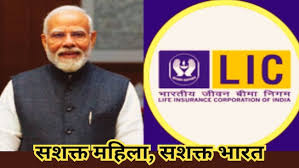
Life Insurance Corporation of India (LIC) recently entered into an MoU with the Department of Rural Development, Union Ministry of Rural Development, to promote its Bima Sakhi Yojana in rural areas.
- Bima Sakhi Yojana is an initiative of the Life Insurance Corporation of India (LIC).
- It is a performance-oriented stipendiary scheme exclusively for women.
- It is designed to empower women aged 18-70 years, who are Class X pass.
- They will receive specialized training and a stipend for the first three years to promote financial literacy and insurance awareness.
- Female agents will get a stipend of 7,000 per month for the first year, Rs. 6,000 per month in the second year, and Rs. 5,000 per month in the third year.
- Bima Sakhis will also get commissions.
- They will receive a commission of Rs 48,000 (excluding bonus) for the first year.
- After training, they can serve as LIC agents, and the graduate Bima Sakhis would have the opportunity to qualify for being considered for Development Officer roles in LIC.
- The plan is to appoint two lakh Bima Sakhi over a period of three years.
- Women must be aged between 18 and 70.
- The minimum qualification of a woman must be 10th grade passed.
- Preference will be given to women residing in rural areas.
- The following women are ineligible to apply for this scheme:
- Women related to existing agents and employees of LIC. Relatives include spouses, children, adopted and stepchildren, parents, sisters, brothers, and immediate in-laws.
- Women should not be retired employees and ex-agents of LIC.
- Women should not be existing agents of LIC.
International Seabed Authority : In News
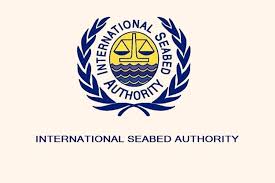
After two weeks of negotiations, the International Seabed Authority (ISA) is still far from finalising rules for the extraction of coveted metals on the high seas despite heightened pressure triggered by US efforts to fast-track the controversial practice.
- It is an autonomous international organization established under the 1982 United Nations Convention on the Law of the Sea (UNCLOS) and the 1994 Agreement relating to the Implementation of Part XI of the United Nations Convention on the Law of the Sea (1994 Agreement).
- ISA, which has its headquarters in Kingston, Jamaica, came into existence on 16 November 1994, upon the entry into force of UNCLOS.
- Mandate is to regulate mining and related activities in the international seabed beyond national jurisdiction.
- The international seabed area the part which is under ISA jurisdiction is the seabed and ocean floor and the subsoil thereof, beyond the limits of national jurisdiction.
- The international seabed area covers around 54 percent of the total area of the world’s oceans.
- ISA is the organization through which states parties to UNCLOS organize and control all mineral-resources-related activities in the international seabed area for the benefit of humankind as a whole.
- In so doing, ISA has the mandate to ensure the effective protection of the marine environment from harmful effects that may arise from deep-seabed-related activities.
- In accordance with UNCLOS, Article 156(2), all States Parties to UNCLOS are members of ISA.
- ISA has 169 members, including 168 member States and the European Union.
- The supreme authority of the ISA is the assembly, in which all ISA members are represented.
- The assembly sets general policies, establishes budgets, and elects a 36-member council, which serves as the ISA’s executive authority.
- The council approves contracts with private corporations and government entities for exploration and mining in specified areas of the international seabed.
- The council oversees implementation of the seabed provisions of the UNCLOS and establishes provisional rules and procedures (subject to approval by the assembly) by which the ISA exercises its regulatory authority.
- The secretary-general of the ISA is nominated by the council and is elected by the assembly to a four-year term.
United Nations Convention on the Law of the Sea (UNCLOS):
- UNCLOS, also called the Law of the Sea Convention or the Law of the Sea Treaty, is an international agreement that establishes a legal framework for all marine and maritime activities.
- It lays down a comprehensive regime of law and order in the world’s oceans and seas, establishing rules governing all uses of the oceans and their resources.
- UNCLOS became effective on 16th November 1982.
Dharmasthala Manjunatheshwara Temple:

The Sri Dharmasthala Manjunatheshwara Temple at Dharmasthala recently welcomed the formation of a Special Investigation Team (SIT) by the Karnataka government to probe the allegation of mass secret burial of unidentified bodies in the pilgrimage centre.
- Dharmasthala Manjunatheshwara Temple is a Hindu temple located in the town of Dharmasthala in Karnataka.
- It is dedicated to Lord Shiva, who here is worshipped as Lord Manjunatha.
- The temple dates back 800 years.
- It has Madhwa Vaishnava priests and is administered by a hereditary Jain family, the Heggades.
- The temple has been built following the Kerala temple architecture.
- Kerala-style temples are different from temples in other South Indian temple architecture, and the Manjunatha Dharmasthala temple reflects this differentiation.
- Materials used in building the temple are wood, clay, stone, metals, and laterite. The base structure is made up of granite and laterite.
- The temple has a square plan, and therefore a pyramidal sloping roof.
- The wooden roof is covered in gold-plated copper plates to protect the inner skeletal framework.
- Wooden pillars support the front pavilion of the temple.
Meri Panchayat App:
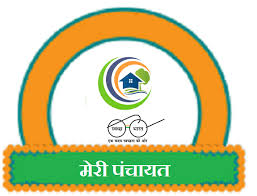
The mobile application “Meri Panchayat” has been internationally recognized with the prestigious World Summit on the Information Society (WSIS) Prizes 2025 Champion Award.
- Meri Panchayat App is designed to provide a unified digital governance platform for rural areas, catering to residents, functionaries, and stakeholders of the Panchayati Raj Institution system.
- This platform integrates and consolidates diverse functions and information currently dispersed across multiple government portals into a single, seamless web-based interface.
- It fosters a more accountable and participatory governance ecosystem for rural communities.
- It is an initiative of the Ministry of Panchayati Raj and National Informatics Centre (NIC) under the Ministry of Electronics and Information Technology.
- Through Meri Panchayat App, citizens can effortlessly access, on their mobile devices:
- Real-time Panchayat budgets, receipts, payments and development plans
- Details of elected representatives and functionaries
- Information on public infrastructure and civic services in their Panchayat
- Gram Panchayat Development Plans (GPDPs) and track project proposals
- Weather forecasting at Gram Panchayat level
- Social audit tools, fund utilization data, and grievance redressal with geo-tagged and geo-fenced features
- Multilingual interface supporting 12+ Indian languages to ensure inclusiveness
- The app also enables citizens to propose new projects, review and rate implemented works, and access Gram Sabha agendas and decisions, thereby strengthening participatory democracy and civic engagement.
Resignation of Vice-President of India:
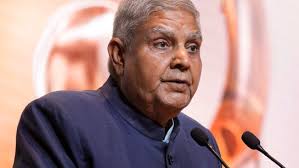
Vice-President of India Jagdeep Dhankhar resigned from his post, and submitted his resignation to President Droupadi Murmu under Article 67(a) of the Constitution. He is the third Vice-President in India’s history to step down before completing his term, after V.V. Giri and R. Venkataraman.
- The Vice-President can resign by writing under his hand, addressed to the President, as per Article 67(a) of the Constitution. The resignation takes effect immediately once submitted.
- Since the Vice-President of India also serves as the ex-officio Chairman of the Rajya Sabha, the resignation creates a temporary gap in parliamentary leadership.
- The Constitution does not provide for an acting Vice-President. However, in the Vice-President’s absence, the Deputy Chairman of the Rajya Sabha will preside over its proceedings.
- The election of the next Vice-President is to be held within 60 days of the expiry of the outgoing Vice-President’s term. However, in the case of a mid-term resignation, unlike the President (where the vacancy must be filled within six months), there is no fixed time frame for electing a new Vice-President.
Monsoon Session of Parliament 2025:
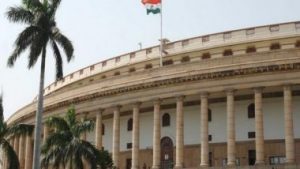
The 2025 Monsoon Session of Parliament has begun. During the session, the Bills of Lading Bill, 2025, which was passed earlier in the Lok Sabha, was approved by the Rajya Sabha.
Sessions of Parliament:
- A session refers to the period between the first sitting and prorogation of a House. A recess is the interval between prorogation and reassembly of Parliament. Typically, there are 3 sessions in a year:
- Budget Session (Feb–May)
- Monsoon Session (July–August)
- Winter Session (Nov–Dec)
- Special Sessions: A Special Session of Parliament is convened outside the 3 regular sessions (Budget, Monsoon, Winter) to deliberate on urgent, exceptional, or historic matters of national significance like India-China war in 1962.
- Under Article 85 of the Constitution, the President summons each House of Parliament, ensuring that the interval between two sessions does not exceed six months.
- While the Constitution does not specify the number of sessions or sitting days, Parliament typically meets three times a year.
Global Wetland Outlook 2025:
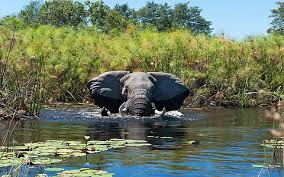
The Global Wetland Outlook (GWO) 2025, released by the Secretariat of the Ramsar Convention (1971), highlights that Africa’s wetlands are among the most degraded in the world.
- Wetlands (Seagrass, Kelp Forests, Coral Reefs, Estuarine Waters, Salt Marshes, Mangroves, Tidal Flats, Lakes, Rivers and Streams, Inland Marshes and Swamps, and Peatlands) cover over 1,800 million hectares globally, including inland freshwater, coastal, and marine ecosystems.
However, data uncertainty persists due to inconsistent methods and gaps in historical data. - Since 1970, the world has lost about 411 million hectares of wetlands, marking a 22% global decline at an average annual loss rate of -0.52%.
- Wetlands in Africa, Latin America, and the Caribbean are facing the worst levels of degradation, but ecological deterioration is also rising in Europe, North America, and Oceania.
- Wetlands are in the worst condition in Least Developed Countries (LDCs). In upper-middle-income and developed countries, more wetlands are reported in good condition than poor.
- Wetlands provide food, water filtration, disaster protection, carbon storage, and cultural value.
- The ecosystem service value of global wetlands is estimated at USD 39 trillion. Wetlands make up just 6% of Earth’s surface but deliver ~7.5% of global GDP in value.
- Over 60% of GDP in some African countries comes from nature-based sectors. Wetland loss increases climate risks and lowers productivity. Investing in wetlands is a smart, cost-effective step toward sustainable growth.
- Biodiversity funding is just 0.25% of global GDP, far too low to meet current needs.
Wetlands:
- The Ramsar Convention defines wetlands as areas of marsh, fen, peatland, or water natural or artificial, permanent or temporary with static or flowing water that may be fresh, brackish, or salty, including shallow marine areas up to six meters deep at low tide.
- It also allows inclusion of nearby riparian or coastal zones and deeper marine areas if they lie within the wetland system.
AdFalciVax for Malaria:
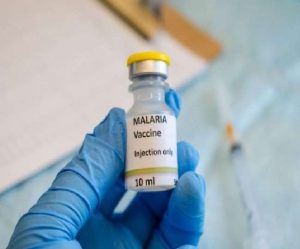
The Indian Council of Medical Research (ICMR) is developing a novel chimeric malaria vaccine AdFalciVax.
- AdFalciVax is a multistage malaria vaccine targeting two key stages of Plasmodium falciparum (pre-erythrocytic stage (liver) and sexual stage (that allows transmission via mosquitoes) using Lactococcus lactis (a safe, food-grade bacterium).
- It aims to protect individuals and reduce transmission and supports the Make in India initiative and malaria elimination goals.
- A “chimeric” vaccine is one that combines genetic material from different sources to create a hybrid or recombinant structure.
- Malaria is caused by the Plasmodium parasite, transmitted by infected female Anopheles mosquitoes.
- It’s prevalent in tropical and subtropical regions like sub-Saharan Africa, Southeast Asia, and South America.
- Malaria parasites first infect the liver, then enter red blood cells. Symptoms include fever, chills, fatigue, and headache. Severe cases can lead to organ failure or death. It is both preventable and curable.
- R21/Matrix-M and RTS,S vaccines have been shown to be safe and effective in preventing malaria in children, and are expected to have a significant public health impact.
- Treatment includes drugs like chloroquine and artemisinin. Youyou Tu received the Nobel Prize for discovering artemisinin.
SASCI scheme:
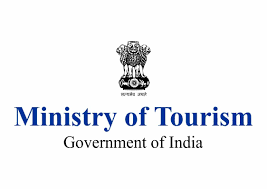
The Ministry of Tourism has released the operational guidelines for the SASCI scheme, aimed at developing iconic tourist sites into globally benchmarked destinations by 2026.
- SASCI stands for Special Assistance to States for Capital Investment – Development of Iconic Tourist Centres to Global Scale.
- It is a centrally funded initiative to upgrade select tourist destinations through capital investment and innovation.
- Implemented by the Ministry of Tourism, Government of India.
- Objective of SASCI:
- To transform iconic Indian tourism destinations into world-class attractions.
- To enhance the end-to-end tourist experience, boost global competitiveness, and attract investments.
National Flag Day 2025:
India observed National Flag Day (Tiranga Adoption Day), on 22nd July 2025, to mark the anniversary of the Indian National Flag’s official adoption by the Constituent Assembly in 1947. The National Flag in possession of the Archaeological Survey of India at Fort St George Museum in Chennai is known as the oldest surviving Indian national flag. It was hoisted at Fort St George in Chennai on 15th August 1947.
India high-level meetings with Taliban:
India held back-to-back high-level meetings with Taliban representatives including Foreign Secretary-level talks and EAM Jaishankar’s call with Amir Khan Muttaqi. Russia’s formal recognition of Taliban adds momentum to India’s cautious but deepening engagement.Taliban’s promise to prevent anti-India activities offers India a chance to deny Pakistan a terror foothold via Afghan territory. Afghanistan serves as a geographic bridge to Central Asia. With Pakistan denying overland routes, the Chabahar port and Afghan corridor offer India economic and strategic alternatives. Central Asia holds untapped energy reserves. India’s expanded connectivity through Afghanistan supports its long-term energy diversification goals. Afghanistan provides a counterbalance to the China–Pakistan Economic Corridor (CPEC). A Taliban-friendly India denies Pakistan strategic depth. According to Barry Buzan, insulating states like Afghanistan play a role in regional order. A stable, India-engaged Afghanistan helps consolidate a South Asia–centric security framework.
Gita Gopinath Resigns as IMF Deputy Chief:
Gita Gopinath, currently serving as the First Deputy Managing Director of the International Monetary Fund (IMF), will step down in August 2025 to return to Harvard University as a professor of economics. Her departure marks the end of a significant chapter at the IMF, where she played a pivotal role during global crises, including the COVID-19 pandemic and the Russia-Ukraine conflict. Gopinath’s contributions have been widely acknowledged for elevating the Fund’s research, analysis, and global economic coordination, making this development noteworthy for aspirants in civil services and banking exams, where understanding global institutions and leadership changes is crucial.
SBI’s Raise The Amount Of ₹25,000 Crore Via QIP:
The State Bank of India (SBI) achieved a historic milestone on July 22, 2025, by successfully executing India’s largest-ever Qualified Institutional Placement (QIP), raising ₹25,000 crore. The QIP was oversubscribed 4.5 times, indicating robust investor confidence in India’s banking sector and economic trajectory. With strong participation from both domestic institutional investors, including LIC, and foreign investors, this fundraise will strengthen SBI’s capital adequacy and support its credit expansion strategy. The event is highly relevant for competitive exam aspirants, as it combines aspects of banking, capital markets, and economic fundamentals.
Puducherry Launches One-Time Regularisation Scheme for Unauthorised Constructions:
The Government of Puducherry has launched a One-Time Regularisation Scheme (OTRS) in 2025 to address the issue of unauthorised constructions and building plan violations. Aimed at providing legal relief and ensuring urban planning compliance, the scheme applies to buildings constructed between May 1, 1987 and July 16, 2025.
NABARD Celebrates 44 Years:
The National Bank for Agriculture and Rural Development (NABARD) recently celebrated its 44th Foundation Day, reaffirming its commitment to rural development, financial inclusion, and institutional strengthening. Established in 1982, NABARD plays a pivotal role in enabling sustainable and inclusive growth in India’s rural landscape. The celebration was marked by events, documentaries, and publications that showcased the bank’s achievements and future priorities, especially in the state of Andhra Pradesh and Arunachal Pradesh, where it has undertaken significant infrastructure and credit initiatives.




